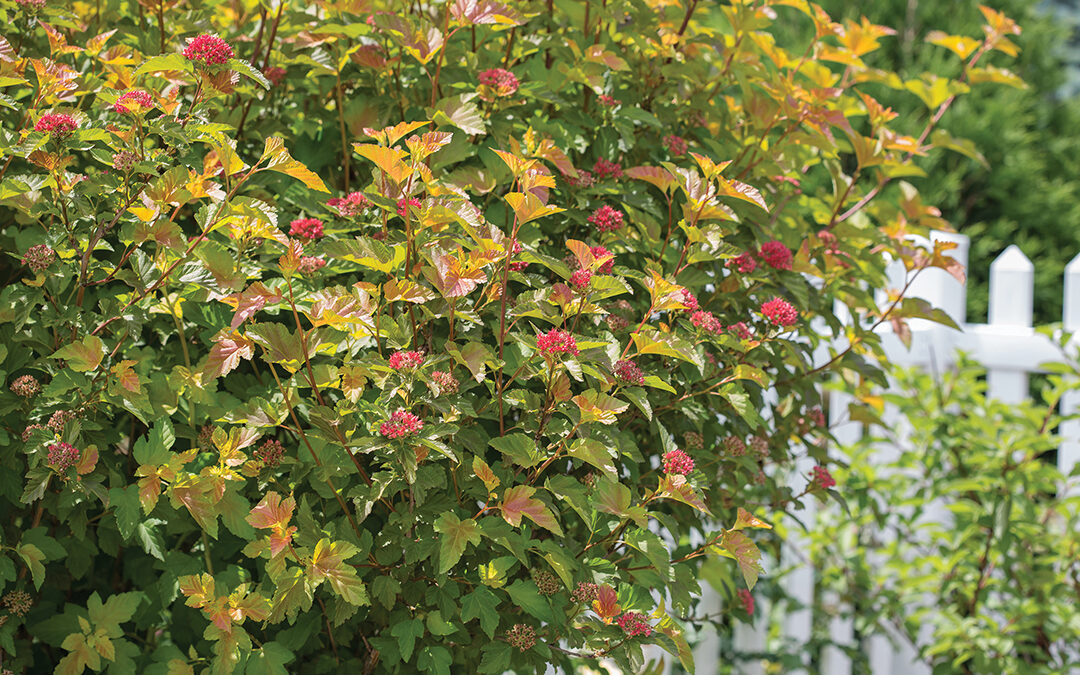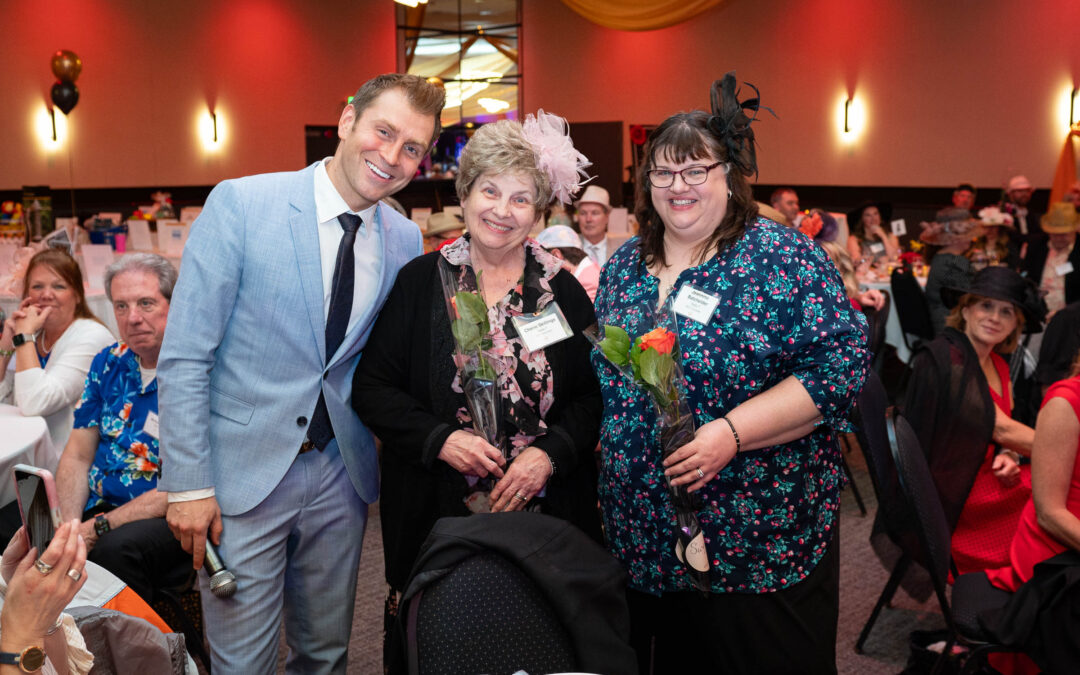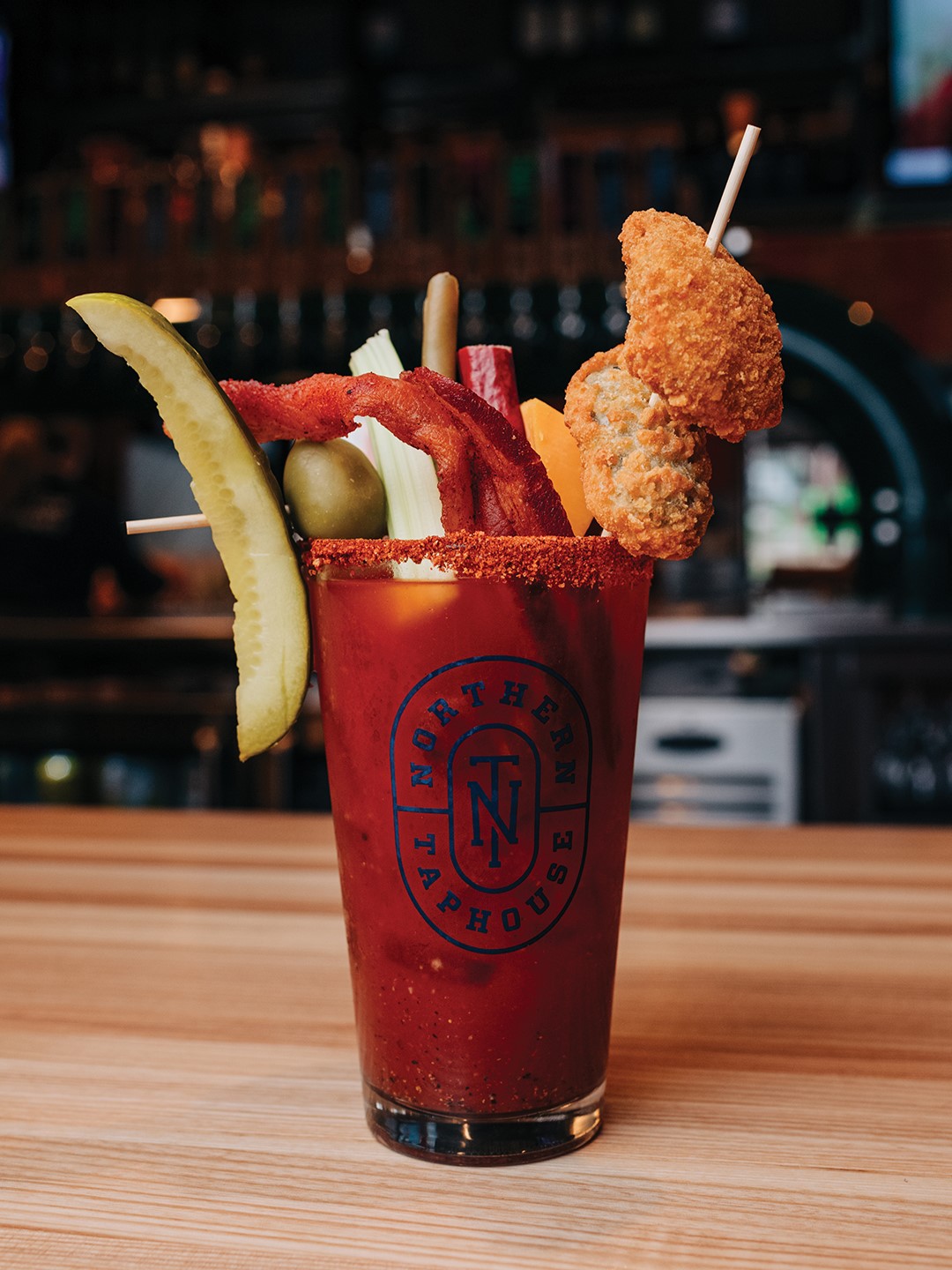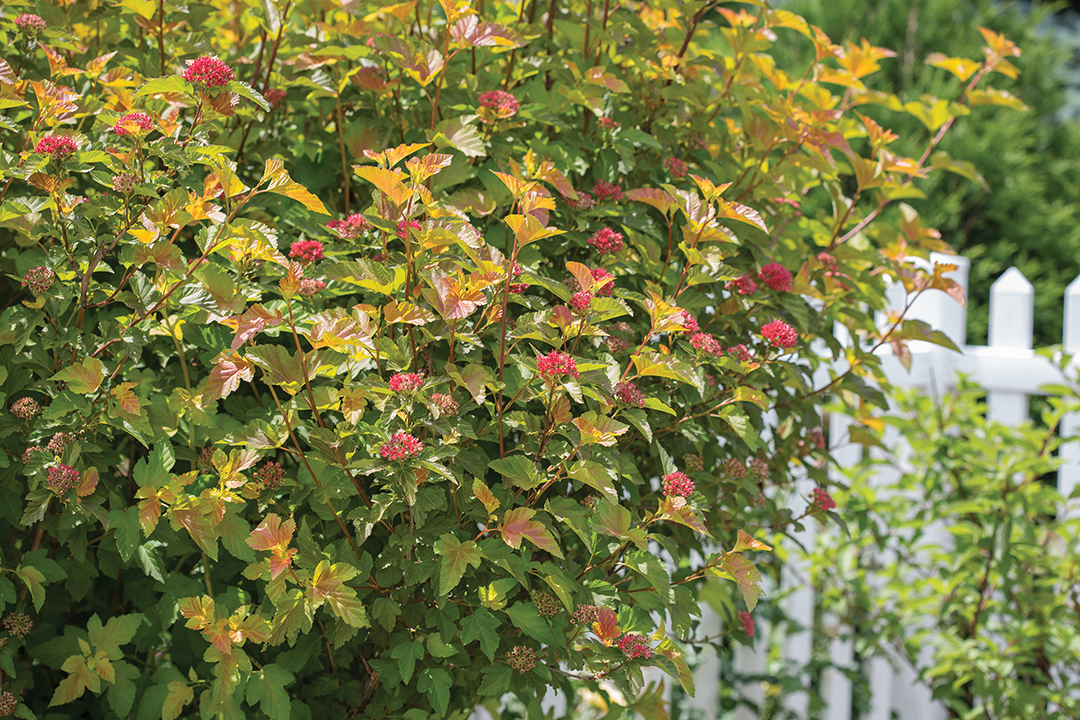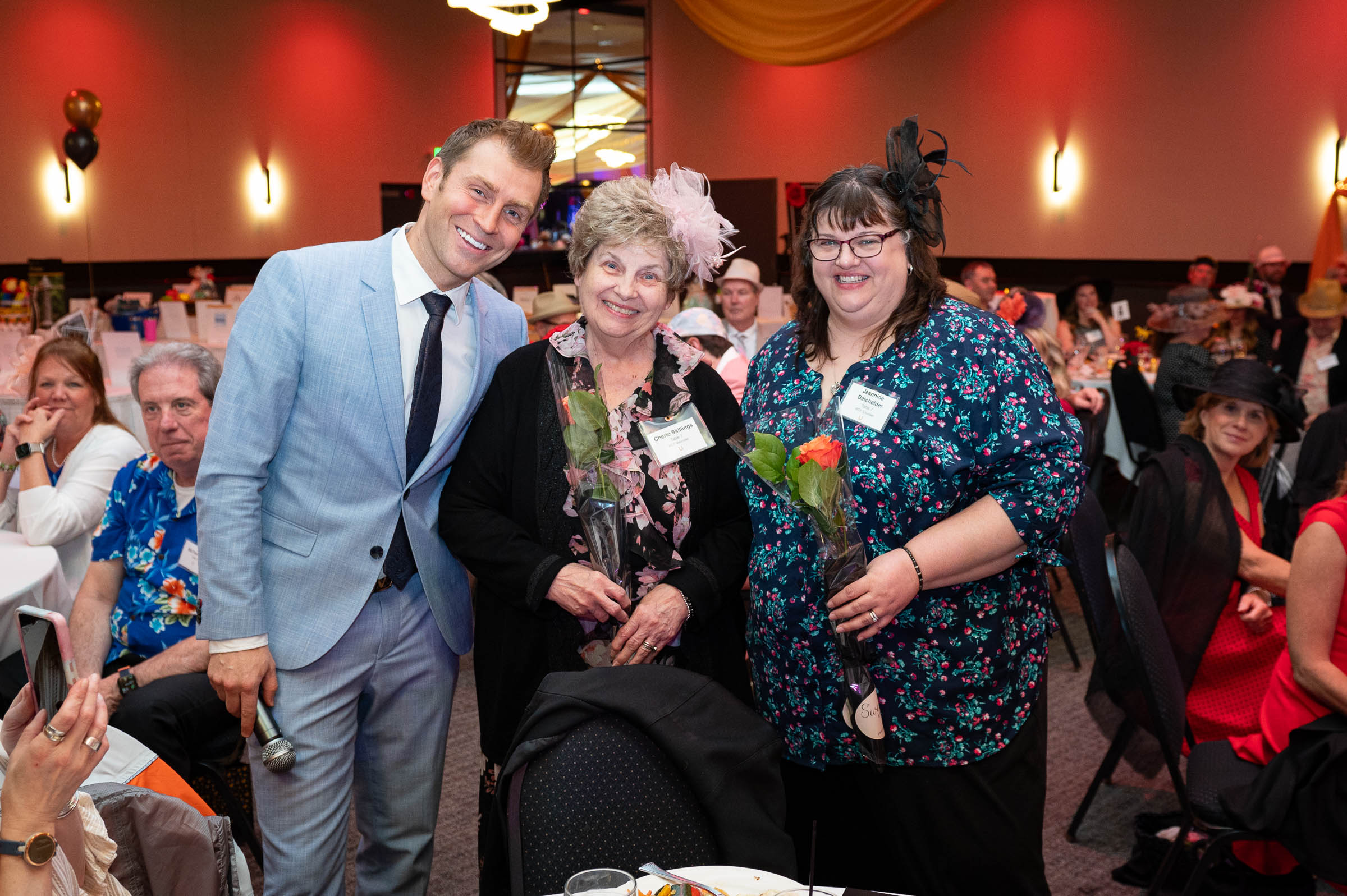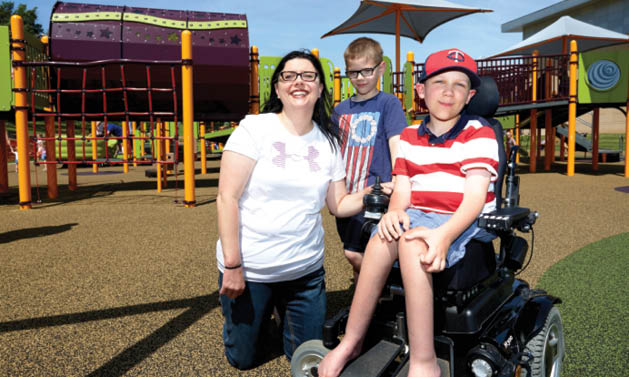
Page Laska with her sons Garrett and Ben at Madison’s Place. Photo: Tate Carlson
Woodbury welcomes Madison’s Place, the first fully handicapped-accessible playground in the east metro.
In 2005, Dana Millington of Woodbury founded the Madison Claire Foundation in memory of her daughter Madison, who died after a two-year battle with spinal muscular atrophy. A few years later, she heard of an accessible playground in California and knew that she wanted to focus the foundation’s next efforts on building one in Minnesota in honor of Madison.
Earlier this summer, that goal came to fruition when the 16,000 square-foot Madison’s Place playground opened at the Bielenberg Sports Center in Woodbury. It’s the first fully inclusive playground in the east metro and is completely ramped with rubber surfacing and specialized play equipment.
After the city approved the project in 2010, Millington got started on fundraising, with donations to the foundation now totaling $830,000. Once designs were finalized, about 100 volunteers completed the bulk of construction last fall through a partnership with Habitat for Humanity.
During the planning process, Millington sought input from professionals such as Kate Ward, a physical therapist and a member of the Madison Claire Foundation’s board. Ward, who worked at the University of Minnesota Children’s Hospital and now works at Gillette Children’s Specialty Healthcare, helped with brainstorming and picking out equipment.
Beyond including safe and accessible surfaces and ramps, Ward says it was important to make sure the spectrum of all ability levels was accounted for in the design. She approached the process considering all angles of the range of physical, communication-related or sensory processing disabilities. For example, she says a child with low or no vision may gravitate more toward the swing at the playground, offering vestibular input, which is related to movement and balance.
Many look at a playground and think of it as a fun space, but “a playground can really amplify what might even seem like not too big of a disability; it can be a dividing thing for kids trying to play together,” Ward says. “If constructed intentionally and with more thought, it can really reduce that disability or minimize the effects it has on the child to really just interact with their peers and their families.”
Along with being a space for anyone with lifelong disabilities, Ward says Madison’s Place is great for kids who have injuries or are working on physical therapy. Millington notes that Madison’s Place is also there for parents, grandparents or guardians with disabilities who want to be able to take their kids to the playground.
One of Millington’s motivations for building Madison’s Place stemmed from an experience when she took Madison and her two siblings to the playground. It wasn’t accessible at all to Madison, who used a special stroller and needed someone with her at all times. Millington’s other children were fairly young, and she was forced to stay with Madison on the sidelines as they ran off to play. “We never went back, so my kids never had the opportunity to play with their sister in a traditional sense at a playground,” Millington says. “That was one of our driving forces behind this as we’ve seen other families that have a disabled child with able-bodied siblings. They just want to all go out and play together.”
For Millington, establishing Madison’s Place has been a way to create something good out of a painful experience and show her kids Harrison, Grace and Emerson the value in helping others. “It’s allowed us to talk to her continually,” Millington says. “It’s allowed us to keep Madison’s memory alive and to have something positive come out of something that was so sad.”


